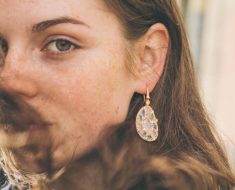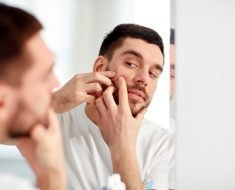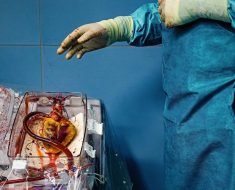Finding what you think is a sign of breast cancer can send you into a freak-out spiral. While it’s normal to be scared, don’t be so worried that you talk yourself into ignoring it and hope it resolves itself on its own. “With early detection, we can have great outcomes. The five-year survival rate [at the earliest stage] is 98.5 percent,” Jane Mendez, MD, surgical oncologist and chief of breast surgery at Miami Cancer Institute, tells Health.
Today, 12.8% of women in the US will develop breast cancer during her lifetime, according to the National Cancer Institute. That risk rises with age, but “you’re never too young to have breast cancer,” says Dr. Mendez. So if you notice any of these common symptoms below, see your doctor and have it checked out, just to play it safe. “Getting an ultrasound [to rule out breast cancer] doesn’t cost much and is so easy to do,” she says.
A hard, painless lump
A lump is by far the most well-known (and common) breast cancer symptom. But having a lump doesnt't mean you have cancer. Some breast lumps are benign cysts, according to the American Cancer Society; others are harmless bumps caused by pregnancy, normal changes in your monthly cycle, or breastfeeding, Dorraya El-Ashry, PhD, chief scientific officer of the Breast Cancer Research Foundation (BCRF), tells Health. “Some changes can be temporary, but if the lump sticks around for more than one period cycle, visit your doctor,” she says.
Discolorated breast skin
This symptom usually affects women in their 60s and can be a symptom of a rare type of breast cancer called inflammatory breast cancer, says Dr. Mendez. How does this discoloration present itself? “[A woman] might come in saying her breast is red, inflamed, and feels heavy,” she explains.
Age and health history matter here. If you’re in your 30s and breastfeeding, discolored breast skin might point to mastitis (an infection of breast tissue often caused by a blocked milk duct). But if you’re a postmenopausal woman and can’t remember any kind of injury or bug bite affecting your breast, that may be a red flag. In that case, your doctor should examine you to exclude an inflammatory breast cancer.
One breast shrinks
You swear that they both used to be full and now one is visibly…smaller? “Sometimes when there’s a tumor in one breast, the tumor pulls the skin and ligaments, which causes that shrinkage,” says Dr. Mendez. What’s more, “a lot of breast tissue is fat. The cancer is eating up this fat [contributing to shrinkage],” she says.
Your breast has the texture of a golf ball
If an area of your breast skin looks dotted by small craters, that dimpling may indicate breast cancer. As with breast shrinkage, the tumor may be pulling on the skin, causing irregular divots. It may also look oddly textured, like an orange peel—a symptom called peau d’orange (or “skin of the orange” in French), which may appear in inflammatory breast cancer.
One or both nipples are inverted
Some women have nipples that point out; others have nipples that are perfectly flat or point inward, aka are inverted. “Some women naturally have inverted nipples, and that’s not a sign of breast cancer," says Dr. Mendez. "But if you notice that your nipple is no longer erect and is now inverted, then you want to get that checked out."
Unusual nipple discharge
The only fluid that should come out of your nipple is breast milk if you’re breastfeeding. Beyond that, nipple discharge, including bloody discharge, warrants a call to your doctor. Nipple discharge can be caused by lots of conditions other than cancer—such as a benign growth. Still, don't blow it off, especially if you have unexplained nipple discharge along with a lump.
To get our top stories delivered to your inbox, sign up for the Healthy Living newsletter
Source: Read Full Article





